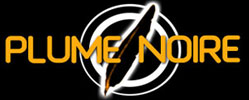
|
|
Originally conceived as a segment of the famous Immoral Tales, this controversial Beast was transformed into a feature-length film and released in 1975. The film that still enjoys a bad reputation classifies itself as a "cursed film" like Pasolini's Salo. The Beast opens with two horses mating under the watchful eye of their trainer and is filmed in a rather repulsive quasi-pornographic manner. The director's intention is clear: by starting off with a shocking scene, he wants to shock and test the public at all costs, to push them into his corner and make The Beast an exercise that must be endured before discovering the point. Obviously it's an effective process, since during the screenings, the majority of the audience left the room. However, if this scene is watched closely, being aware that hiding underneath the trainer is a primitive animal, one can perceive Borowczyk's aim. This voyeurism and bestial nature of the character is only the reflection of a director who claims the sexual obsessions that he openly wishes to direct in his films. The fantasies in connection with the young aristocrat pursued by the monster in the forest obviously refer to the Beauty and the Beast. Borowczyk's version totally splits from Cocteau's poetic tale and nonetheless offers a more realistic vision of what the meeting between a creature and a woman might be. Here poetry is replaced by a repugnant pornography, but the voluntarily grotesque dimension of this scene (one thinks in particular of the costume and "the implements" of the monster) indeed translates the satire of the film. In another scene, the heroine discovers a pornographic drawing behind a table. Though this sketch would not seem odd in a Rabelaisian story, it could also just as easily be attributed to Cocteau, first for showing a lesser-known side of the artist. This would also disclose the less poetic fantasies at the origin of his adaptation of the Beauty and the Beast. This sexual approach of the tale could also be applied to other stories like Little Red Riding Hood. The Beast also takes on societal problems. Returning to the beginning scene with the horses, one notices that it is edited in parallel with the arrival of the young heiress whose marriage was arranged with an aristocrat. The mating of the horses serves as an allegory for the forced marriage of two "elites", one noble and one rich, and thus puts a finger on this retrograde practice. The fact that the servants are black and that they speak of slavery refers to the tradition of nobility using servants as a type of slavery. Lastly, the intimate relationship between the priest and the children in his choir takes on a subject even more relevant in the present day. As for movie references, a young woman chased by a monster also seems to be ironic about horror films. Regrettably there's an imbalance between the content and the form. Borowczyk tries to tackle female sexuality, but his rather grotesque approach is really quite male, as the repetition and length of the female masturbation scenes only translate into his voyeuristic obsession. Caught between a succession of perverse images and not very transcendent acting, one especially suffers from sluggish directing that transforms a short film into a full-length feature. Knowing that the Immoral Tales were already copiously spiced, The Beast would certainly have gained in effectiveness had it remained shorter but the satirical ends of the film, which are richer than other segments of the Tales, obviously needed to be featured in a full-length film.
|
|

